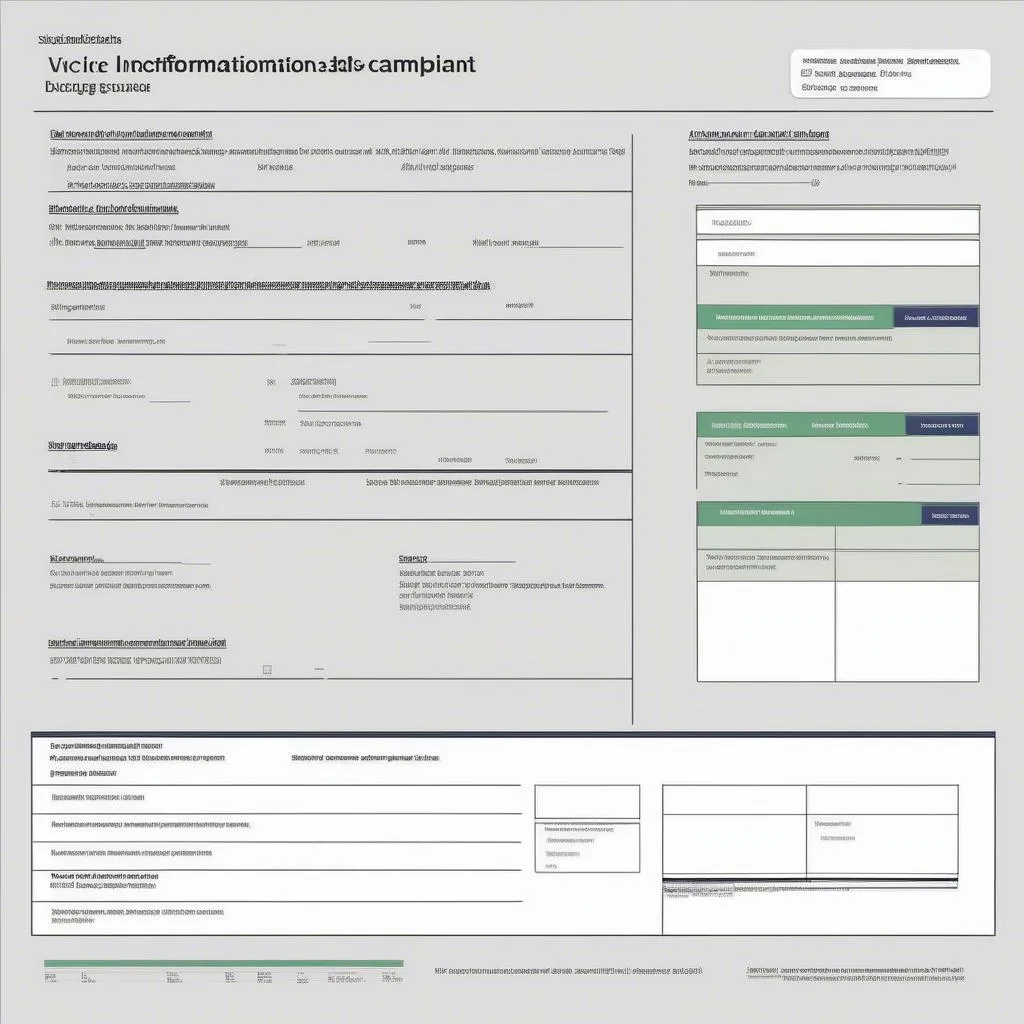Imagine you’re working on a European car, and you need to diagnose a problem. You pull out your scan tool, but where do you even begin? You need a plan, a roadmap to guide your diagnostic journey. This is where a scan tool worksheet comes in handy.
What is a Scan Tool Worksheet?
A scan tool worksheet is essentially a structured document that helps you organize your diagnostic process using a scan tool. It provides a framework for recording information, analyzing data, and ultimately, identifying and resolving the issue at hand.
Think of it as a detective’s notepad – each entry helps piece together the bigger picture.
Benefits of Using a Scan Tool Worksheet
From a technician’s perspective:
- Improved efficiency: It saves you time by guiding you through the diagnostic process in a logical, organized manner.
- Enhanced accuracy: By documenting every step, you minimize the chance of overlooking crucial information.
- Clearer communication: The worksheet acts as a communication tool, allowing you to share your findings and recommendations with colleagues or clients.
From a technical standpoint:
- Enhanced data analysis: The worksheet prompts you to record specific data points, leading to a more comprehensive understanding of the vehicle’s systems.
- Problem identification: The systematic approach helps identify the root cause of the problem more effectively.
- Troubleshooting strategy: It offers a framework for troubleshooting complex issues, breaking down the problem into smaller, manageable steps.
Creating Your Own Scan Tool Worksheet
The ideal scan tool worksheet will vary depending on your specific needs and the tools you have available. However, here’s a general framework that you can adapt:
1. Vehicle Information
- Make and Model: For example, “2018 BMW 3 Series”
- VIN (Vehicle Identification Number): Unique identifier for the vehicle
- Mileage: Important for understanding wear and tear
- Engine: For example, “3.0L inline-6”
2. Complaint
- Customer’s description of the problem: Record the customer’s words verbatim.
- Any relevant symptoms: For example, “Engine light on,” “Car won’t start,” “Reduced power.”
3. Scan Tool Readings
- System Codes: Record all fault codes retrieved from the scan tool.
- Data Stream Readings: Note any unusual readings for relevant parameters like engine speed, fuel pressure, or oxygen sensor readings.
- Freeze Frame Data: Capture the conditions under which the fault occurred.
- Live Data: Record readings while performing specific tests or driving maneuvers.
4. Diagnosis
- Analysis of the problem: Interpret the scan tool readings in light of the complaint.
- Possible causes: List potential sources of the problem.
- Verification Steps: Describe the tests you plan to perform to confirm your diagnosis.
5. Repair
- Repair Performed: Detail the repairs done.
- Parts Replaced: List all parts replaced.
- Verification After Repair: Describe how you verified the problem was resolved.
Common Questions Regarding Scan Tool Worksheets
Q: What software can I use to create a scan tool worksheet?
A: There are several options available, such as Microsoft Word, Google Docs, or specialized diagnostic software. You can even create a simple template in a spreadsheet program like Excel or Google Sheets.
Q: What are some good resources for learning more about using scan tool worksheets?
A: There are many online resources available. Here are some suggestions:
- Online forums: Search for forums specific to European car repair.
- Technical training courses: Look for courses offered by reputable automotive training providers.
- Manufacturer websites: Many car manufacturers provide technical information and resources online.
- Automotive repair manuals: Refer to repair manuals specific to the car you’re working on.
Q: Are there any specific scan tool worksheets for European cars?
A: Yes, there are several resources available, including:
- OEM dealer scan tools: These tools are designed specifically for use with vehicles from a particular manufacturer.
- Third-party scan tool manufacturers: Companies like Autel, Launch, and Snap-on offer scan tools and software with specific features for European vehicles.
Q: What are some of the most important tips for using a scan tool worksheet effectively?
A: Here are a few key takeaways:
- Be consistent: Use the same worksheet template for every job, ensuring consistency in your documentation.
- Be thorough: Record all the relevant information, even if it seems insignificant at first.
- Be objective: Don’t let preconceived notions influence your analysis.
- Be organized: Keep your worksheet organized and legible.
- Review regularly: Review your worksheets regularly to identify patterns and trends.
 Sample Scan Tool Worksheet
Sample Scan Tool Worksheet
Q: What are some of the challenges associated with using scan tool worksheets?
A: While scan tool worksheets offer numerous benefits, there are also some challenges:
- Complexity: The complexity of modern vehicles can make it challenging to capture all relevant data points.
- Time commitment: Creating and maintaining a detailed worksheet requires a time investment.
- Limited standardization: There’s no one-size-fits-all template, and you may need to customize it based on specific requirements.
Conclusion
Using a scan tool worksheet can transform your approach to diagnostics, leading to more efficient, accurate, and effective troubleshooting. Embrace the power of organization and documentation to elevate your skills as a technician.
Remember, a systematic approach is key to unlocking the secrets of complex automotive systems.
If you need help with installing or using diagnostic tools, feel free to contact us at Whatsapp: +84767531508. We have a team of automotive experts ready to assist you 24/7.


